If you’re looking for a minimal shoe with knarly trail protection, you’re in for a treat. The Xero Shoes TerraFlex II is the big brother of all the barefoot trail industry, trying to prove you can marry minimal and all-round foot protection.
Affiliate Disclosure: By clicking through the links on this page and purchasing the products, you’ll be helping me out. This is done because I receive a kickback from the sellers at no extra cost to you! Thank you so much for supporting us!
XeroShoes.com
$109.99
(45-day exchange period)
I fully admit the shoe doesn’t look as sleek as other trail shoe brands like the Vivobarefoot Primus Trail or even the Xero Shoes Mesa Trail (very fun, very minimal!), but that’s not always the most important factor.
With the show in hand, you’ll notice it’s built like a bomb and protects your feet from all angles. And that’s why I’ve decided to take it on the 500-mile Colorado Trail this year.
So, how does it fit? Too much or too little ground feel?
Keep reading to find out.
I’m happy to say the TerraFlex II fits true to size!
That’s not always the case with Xero Shoes, so always check the sizing guide when building from the site.
Borrowing from their sandal design, you’ll notice straps running on both sides of the shoe and around the heel. These straps are then looped into the lacing system, meaning any tightening of the laces directly affects the sole and the heel.
This strapping system allows Xero Shoes to fit many different foot shapes and achieve a great lockdown for both wide and narrow feet.
But let’s not go too far.
The shoes are relatively deep. So if you have a low-volume foot, you should look at options like Vivobarefoot.
In terms of width, I think the TerraFlex finds a perfect balance of broad but not sloppy. And that’s true throughout the whole shoe, not just the toe box. If you have a foot that’s wider from the heel through to the toes, give the TerraFlex a try.
Which minimal running shoe is for you?
Take a quick 5-question quiz to identify the perfect minimal running shoe for your feet! You'll get both road and trail options based on your answers!
It fits great, but how does it feel on the trail?
To put it simply, if you were only going to buy one minimal trail shoe, I’d tell you to buy the TerraFlex II.
Why’s that? It’s all in the versatility.
Because I get to review shoes, I’ve tried a range of shoes and can tell you all trail shoes work in different situations –obviously.
But the TerraFlex II comes into its own when dancing down rocky, technical trails.
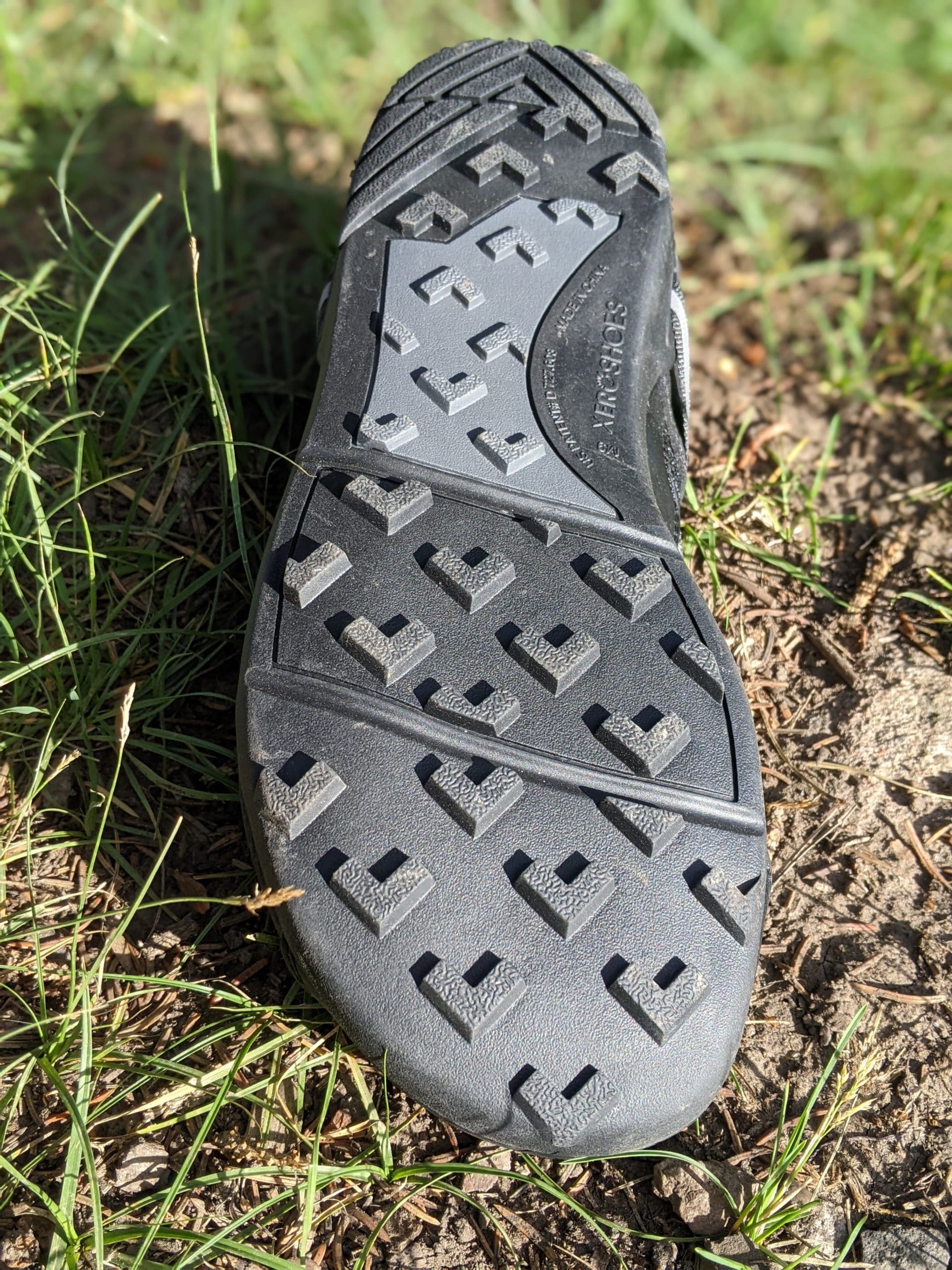
Outsole
The outsole is a tad thicker than its sibling, the Mesa Trail. 1mm difference in the rubber outsole, 0.5mm difference in the lug length, and no difference in the 3mm foam.
I know, it sounds crazy, 1.5mm. Can that make such a difference?
Well, I’m here to tell you it “feels” much different.
When you hit that sharp pointed rock, you don’t wince quite as much in the TerraFlex II (tip: learn to read the trail and dance around sharp stones).
Knowing that you’ll be less likely to batter your feet at the end of a race or a long run is always a bonus.
But doesn’t that mean it’s not as “barefoot”?
Well, yes, that’s true. As soon as you introduce anything between the ground and your foot, it ceases to be barefoot. But you need to adapt to different conditions, and there are obvious advantages to a little more protection. We’re not talking 24mm Altra’s here! 🙂
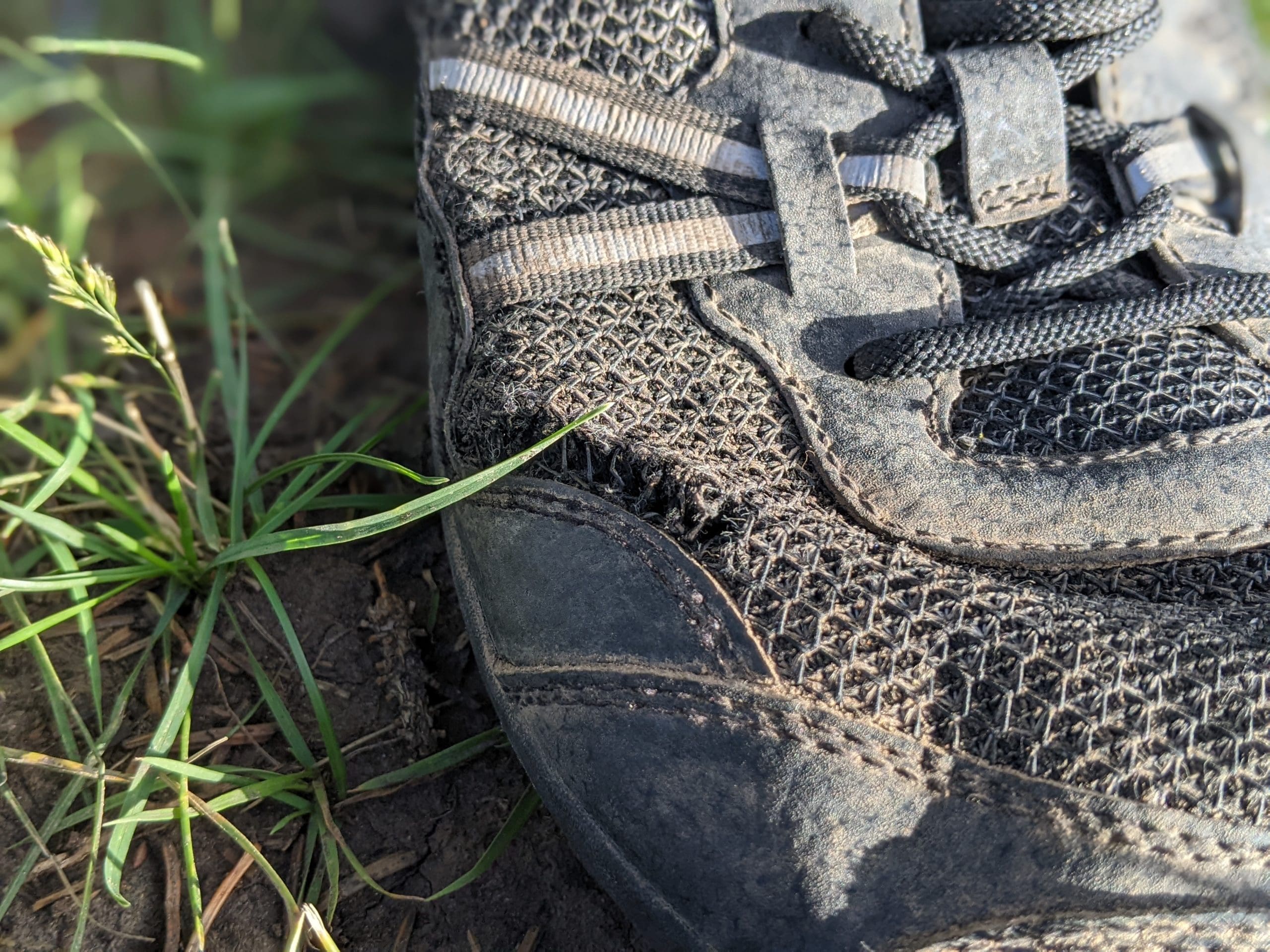
Upper
You won’t find a premium knit, lightweight, sock-like material like you see in the new super shoes like the Nike Vaporflys.
Although, in this case, I’m here to argue that’s a good thing; this is a trail shoe, after all.
In matching the theme of the outsole, the upper is ideally suited to aggressive conditions. The toebox materials and overlays are stiff and more durable than you may expect. Lending to great protection.
It means you won’t find as much give in shoes if you have any pressure points, or at least it’ll take a while for the upper to give a little and mold to your foot shape.
On the other hand, with the TerraFlex upper, you gain a gratifyingly secure feeling. Because your foot is locked down to the sole, your foot doesn’t slip around as a sandal would, and you can be confident that it will stay there as soon as you plant your foot on the ground.

Flexibility
With all this talk of rigid upper materials and durable outsoles, you may wonder if the flexibility has been lost.
And to some extent, it has.
The TerraFlex II is undoubtedly still a minimal shoe, with all the wonderful flexibility you’d expect from a barefoot-like shoe. Still, it’s not quite as floppy and forgiving as some sandals or even the Xero Shoes Mesa Trail.
If you’re dead set on training your barefoot gait and know that the trails you hit are smooth and sandy, then the TerraFlex II may not be the shoe for you.
XeroShoes.com
$109.99
(45-day exchange period)
After reading the rest of the review, I’m sure you know what’s coming in this section.
Yes, this shoe will go the distance.
With a full wrap-around toe box (actually, the wrap-around covers the whole shoe –is it still a toe box at that point?) and 6.5mm of rubber underfoot, any scuff or scrape will leave a mark and nothing else.
To further back up Xero Shoes’ confidence, the outsole has a 5000-mile guarantee.
That’s a huge mileage for a running shoe, and I only hope it reaches this distance.
As a side note, the norm of 300-500 miles before retiring a running shoe is pitiful. When I was training for an Ultra, I was hitting that in less than a month, and with the Colorado Trail I’ve just completed, that was weeks. Is it acceptable to have shoe breakdown so quickly? Money and wastage are a genuine concern here.
You’ll see double stitching in hard-wearing areas, and the exposed fabric is a tough multi-layered weave, so no worries of premature breakdown there.
If I were pushed to share a weakness in the shoe’s durability, I’d likely say the straps.
Although I sang the praises of the straps in the Fit section, these straps are thin and exposed. If you take a few big scrapes to these straps, they could “possibly” break.
But looking at the material used and how flat they lay against the shoe, I still think it’s improbable.
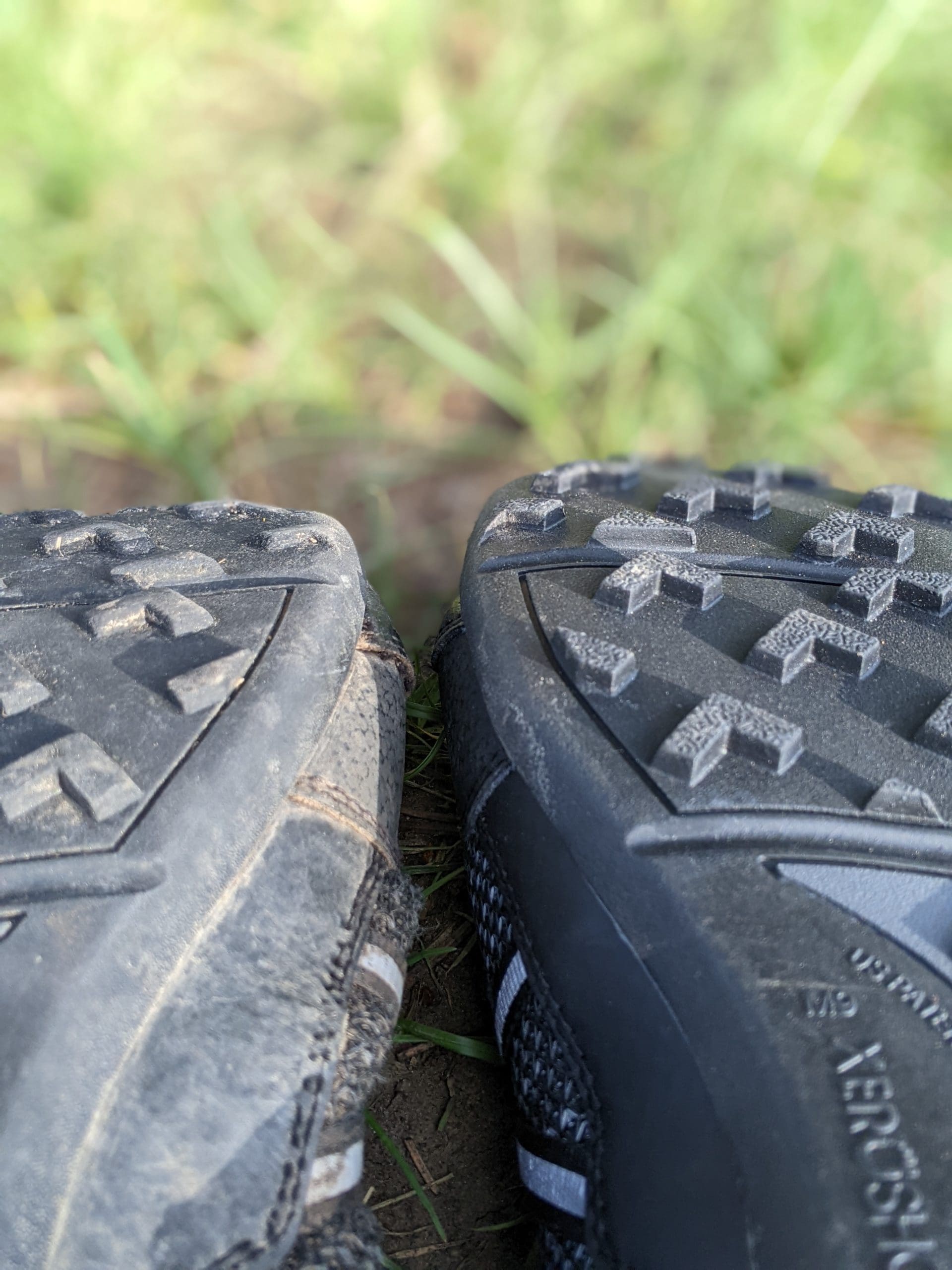
EDIT 07/20/2022 : After completing over 400 miles in the shoe, I now have the data to show where the shoe really breaks down.
- Material upper – The mesh upper, which I thought was durable, did end up ripping. However, it was only the first layer that tore through at the flex point of the toes. It’s not a major concern as it doesn’t affect the shoe’s performance.
- Insole – I never imagined this, but the insole was pancake flat, exposing sticky material at around 300 miles. I’d suggest changing these for a known durable pair of insoles or replacing them early.
- Midsole – Because there’s such minimal midsole, I didn’t believe this would fail. But in my use case, of hiking (not running) around 400 miles in them, the heel packed out and exposed a nasty ridge. Pair this with the failing insoles, and I had a pressure point.
These points sound bad, and I feel Xero Shoes could do better. But bare in mind that I pounded these shoes on the rough Colorado Trail with my body weight + a pack. And even though the shoes are well worn, I will simply replace the insoles and still run in the pair I have.
Which minimal running shoe is for you?
Take a quick 5-question quiz to identify the perfect minimal running shoe for your feet! You'll get both road and trail options based on your answers!
If you’ve read my reviews before, you might know that I like to perform a quick gait analysis of myself running in the shoes. I feel it gives another dimension to help you and me make better shoe-buying decisions.
To perform the analysis, I use University grade measurement pods to estimate ground reaction force, peak impact force, pronation angle/speed, and much more.
To gather the data, I ran on a relatively flat 0.5-mile trail, running the first half at a 5:15 min/km speed and the second half at 4:10 min/km.
As a comparison, I also performed the test with 3 other shoes. So these results will show data for:
- Xero Shoes TerraFlex II
- Xero Shoes Mesa Trail (Thinner and more flexible)
- Vivobarefoot Primus Trail FG (Thinner and more flexible, stiffer upper)
- Altra Superior 5 (21mm of cushion but still zero-drop)
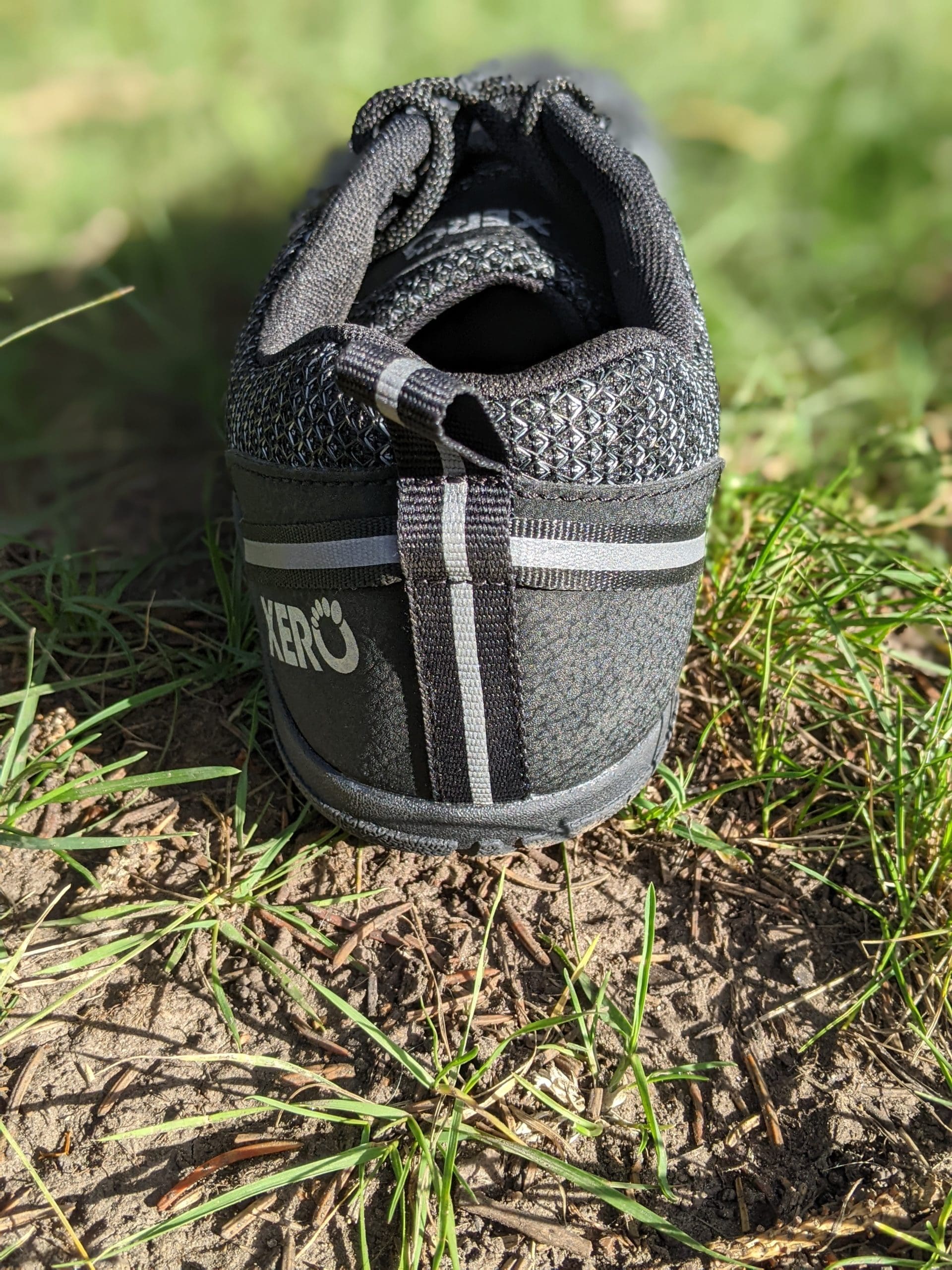
Results
First up, we’re going to look at Impact forces. Impact force is the force exerted in a verticle direction when my foot first contacts the ground.
Impact Forces
| Shoe | Xero Shoes TerraFlex II | Xero Shoes Mesa Trail | Vivobarefoot Primus Trail FG | Altra Superior 5 |
| Impact Force (G) | 5.1 | 7.6 | 3.2 | 6.2 |
These numbers are a bit all over the place and not directly in line with what was expected. Generally, as you increase the cushion, impact forces reduce.
With the TerraFlex II having a little more material underfoot than the Mesa Trail and Primus, I’d expect the result to sit between the Superior and Mesa Trail, but that didn’t hold true.
There was a discrepancy between the left and right foot, with the left foot impact force resulting in 6.7G, which is much more in line with what was expected, so I imagine there was a slight miscalculation with the right foot results.
As for the Primus results, it’s very interesting, and these findings have been repeated in subsequent runs. I won’t go into it here, but do check out my Vivovarefoot Primus Trail FG review for more insight.
The Terraflex could reduce impact forces in comparison to the Mesa Trail, which is helpful if you’ve had overuse injuries in the past. However, it may hinder you if you’re looking to improve your barefoot running gait.
But it’s not all about impact….
| Shoe | Xero Shoes TerraFlex II | Xero Shoes Mesa Trail | Vivobarefoot Primus Trail FG | Altra Superior 5 |
| Peak Ground Reaction Force (multiple of body weight) | 3.2 | 3.0 | 3.0 | 3.0 |
Peak ground reaction force (GRF) is the force exerted on the body when contacting the ground. With higher cushioned shoes GRF are usually higher due to the lack of sensory feedback from the ground feeding information to the brain to land softly.
And here, we see that GRF is higher for the TerraFlex II vs. the two other minimal shoes. The Superior is an outlier, but the numbers are not too far off.
More force will travel through the body when running in the TerraFlex compared to the Mesa Trail or Primus Trail, which may impact specific overuse injuries in the knees, hips, and beyond.

Pronation
Pronation is the angle measurement of the ankle rolling in or out from the foot’s initial contact position.
Many hear about overpronation and expect that they need a well-structured shoe to “correct” pronation. In fact, some amount of pronation is expected and is an essential shock absorption mechanism.
There are two interesting data points of pronation. How far your ankle travels from side to side during a step, and how fast it happens.
| Shoe | Xero Shoes TerraFlex II | Xero Shoes Mesa Trail | Vivobarefoot Primus Trail FG | Altra Superior 5 |
| Pronation Angle (degrees) | -20.6 | -19.2 | -17.5 | -19.5 |
| Pronation Velocity(degrees/sec) | 1135 | 1014 | 1032 | 1068 |
We can see here that the Terraflex II acts more like the cushioned Superior. Again that makes sense because there is more material underfoot than the other minimal shoes.
My ankle was rolling further inwards in the higher cushioned shoes and at a faster rate.
The figures for the Terraflex show even more pronation than any of the shoes on test, so it’s worth bearing in mind if you have an issue with flat feet or overpronation, you may want to try training in a super minimal shoe to strengthen your feet first.
The Xero Shoes TerraFlex II is a great all-rounder shoe built for rough terrain.
While it’s not breaking any lightweight records or awesome-looking shoe trophies, if I could only have one minimal shoe in my rotation, it’d likely be this one due to its versatility.
Coming in at $109.99, it’s relatively affordable for a running shoe, and for the mileage, I expect this shoe will go to, it’s a real bargain for the savvy trail runner.
XeroShoes.com
$109.99
(45-day exchange period)
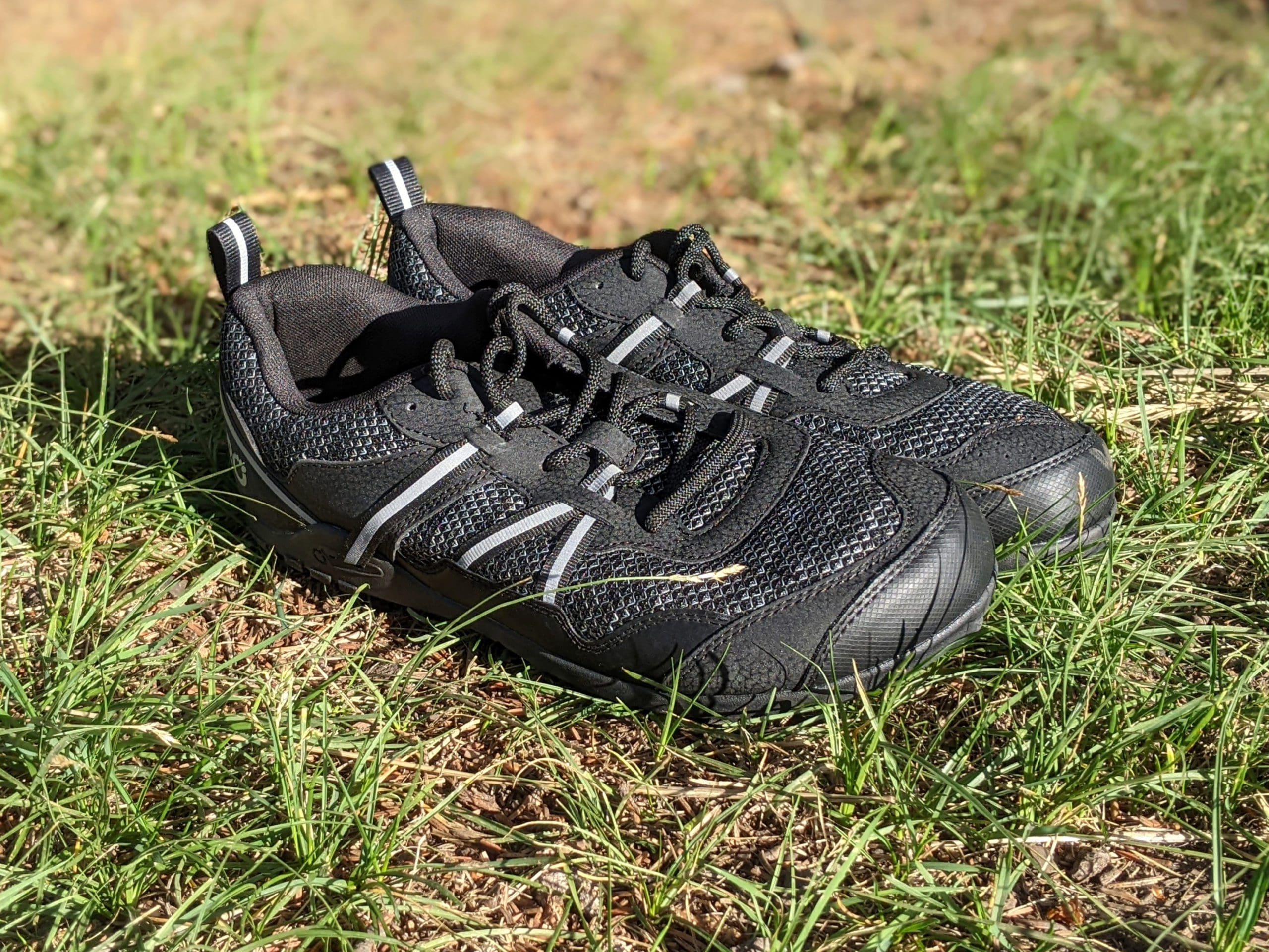
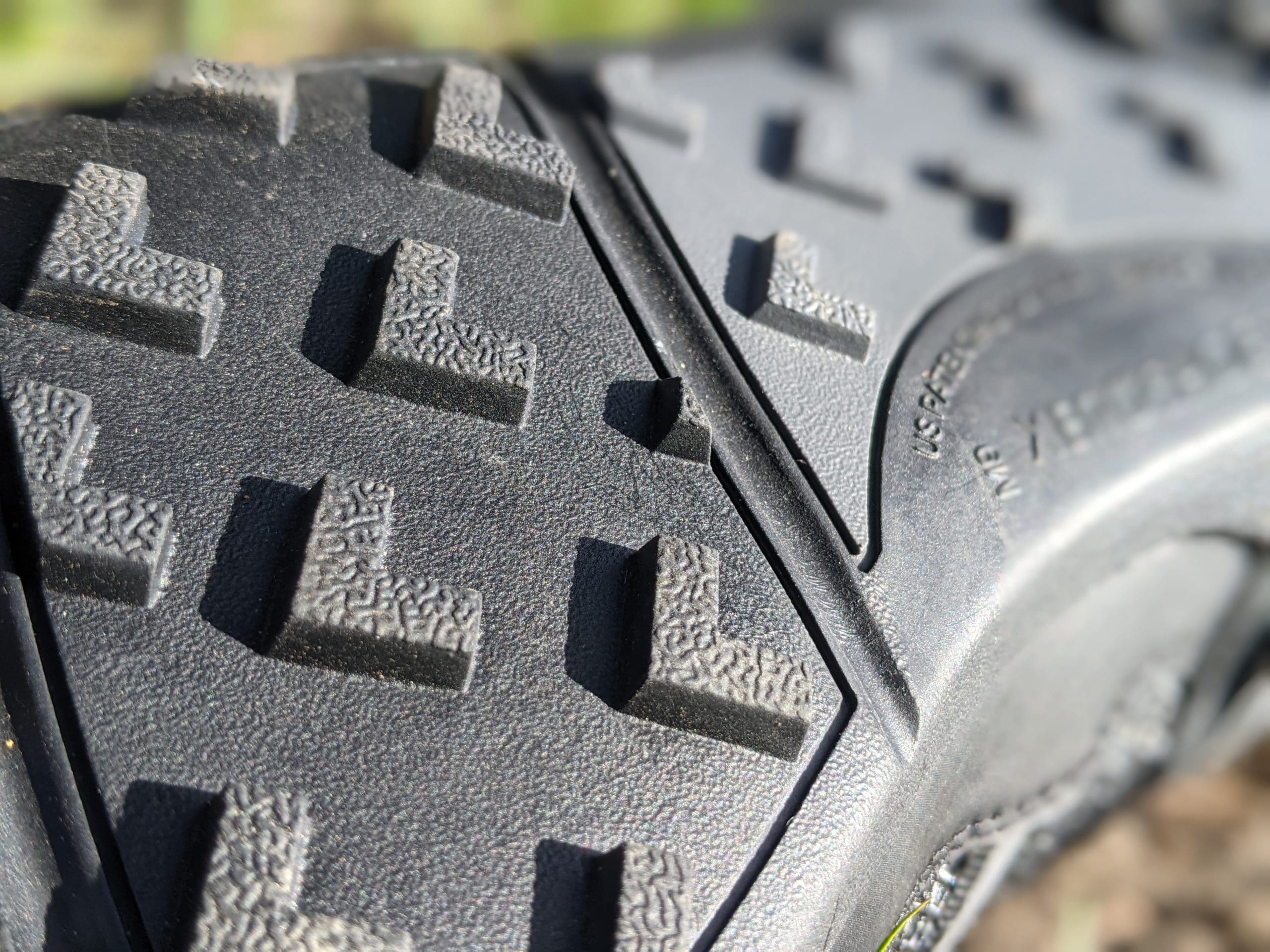
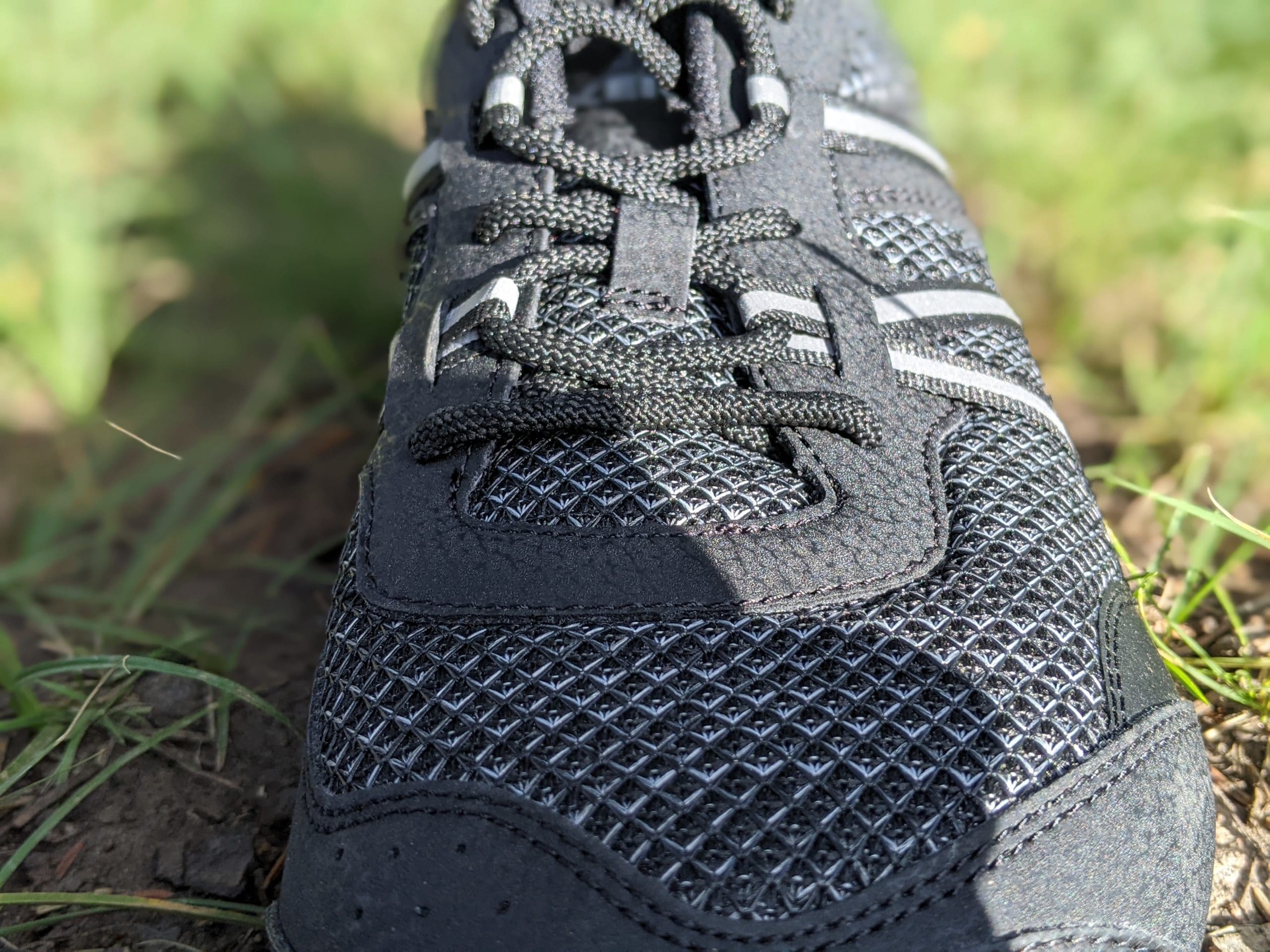
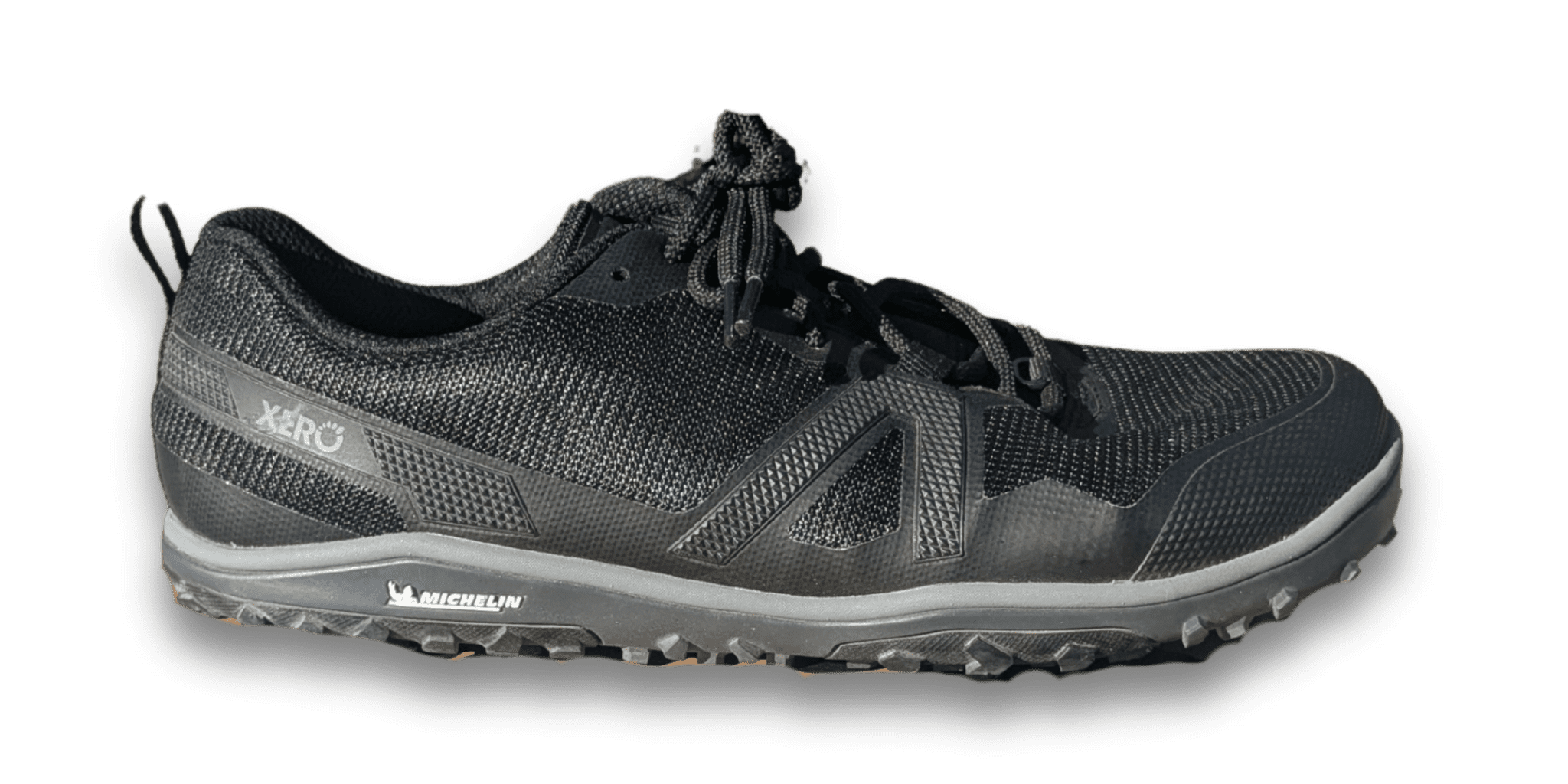
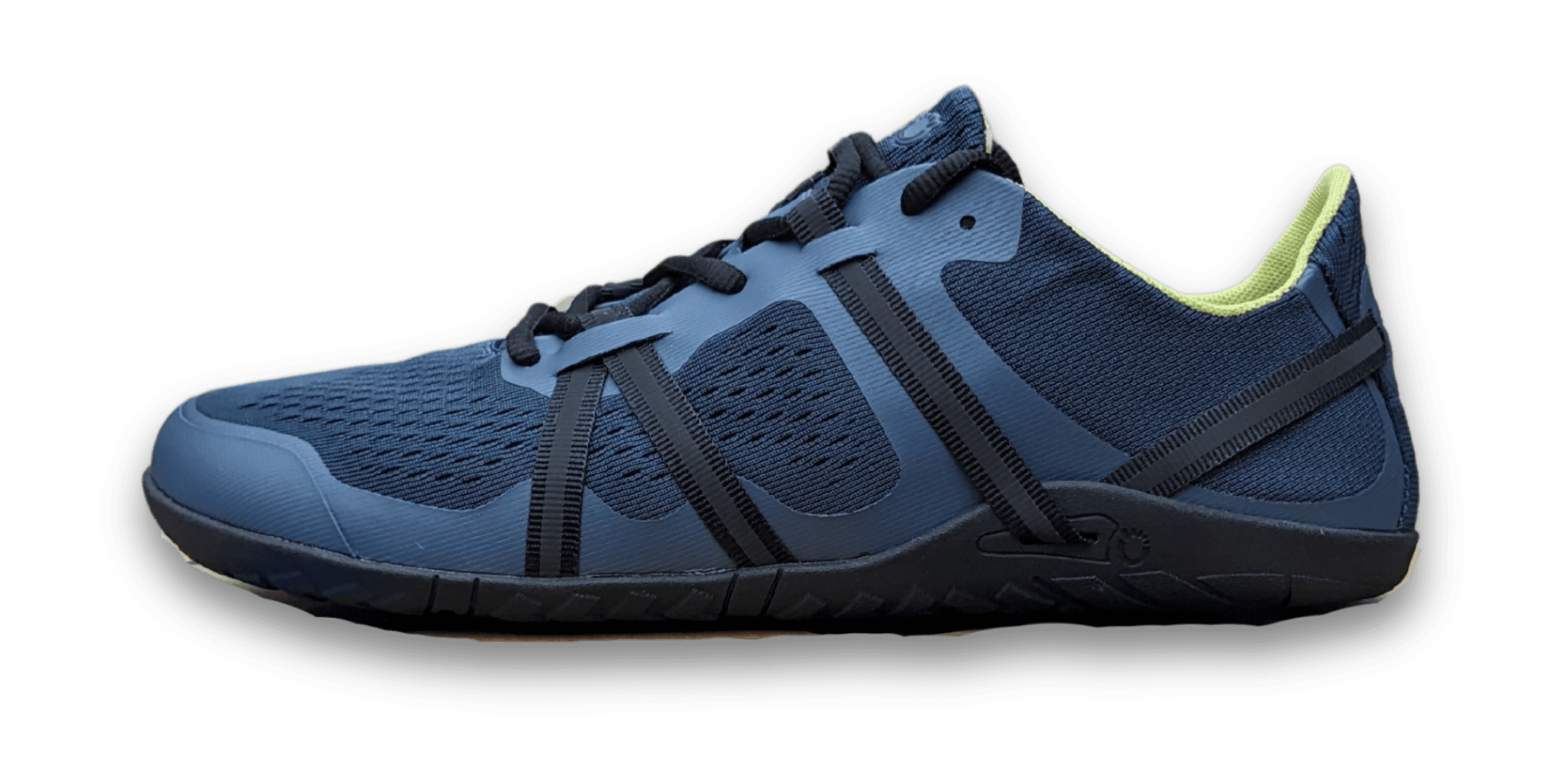
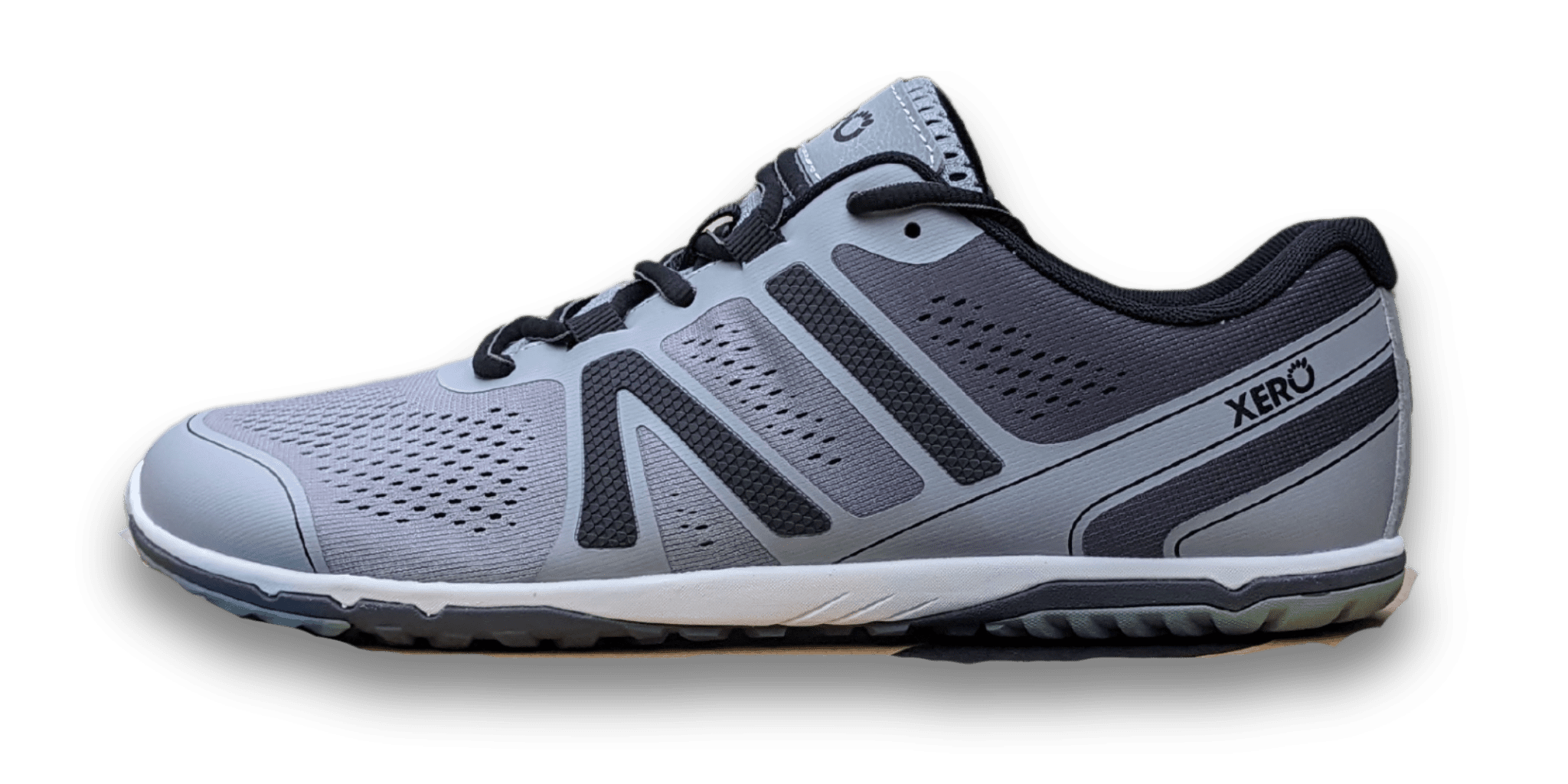

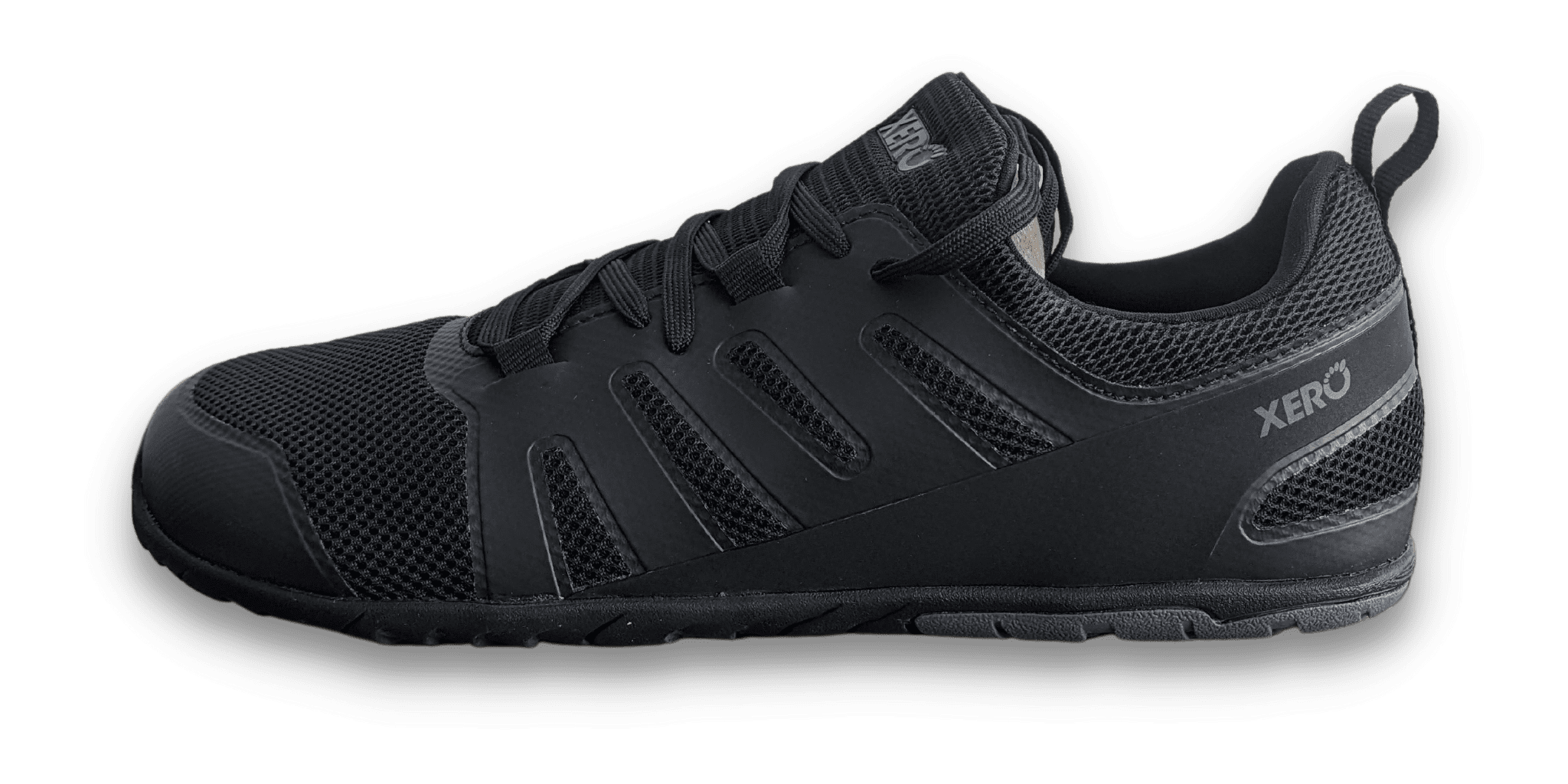
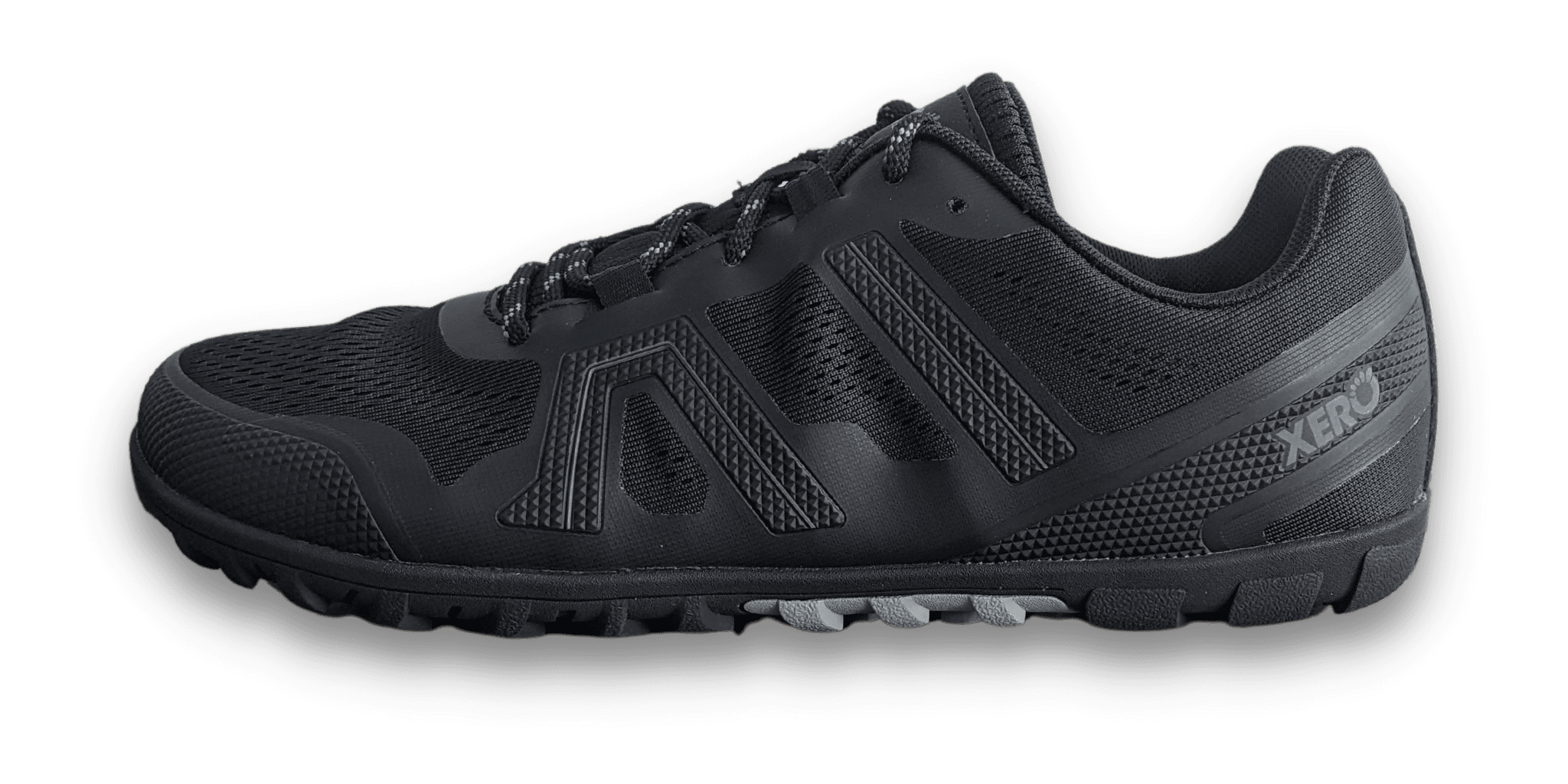
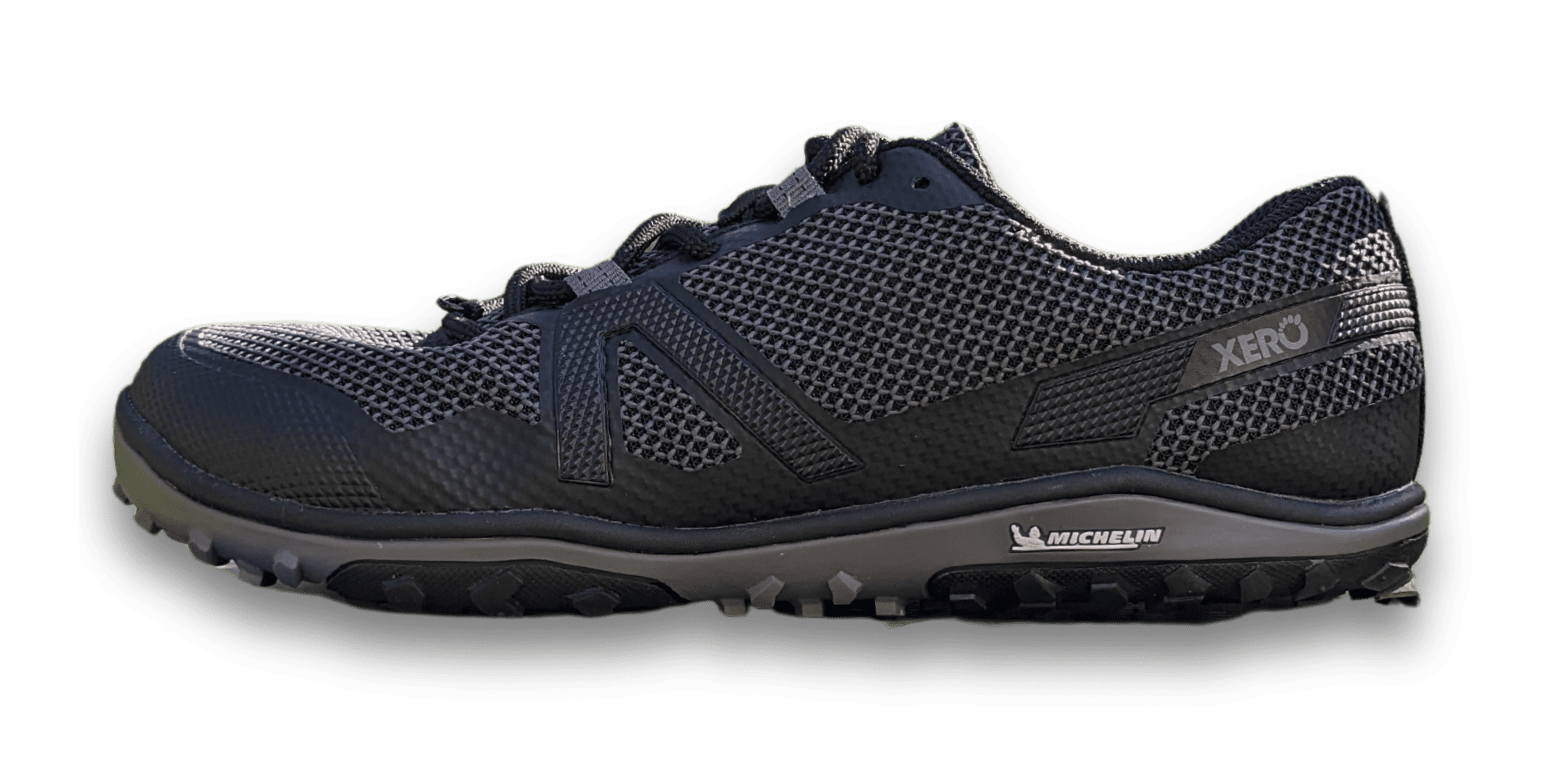

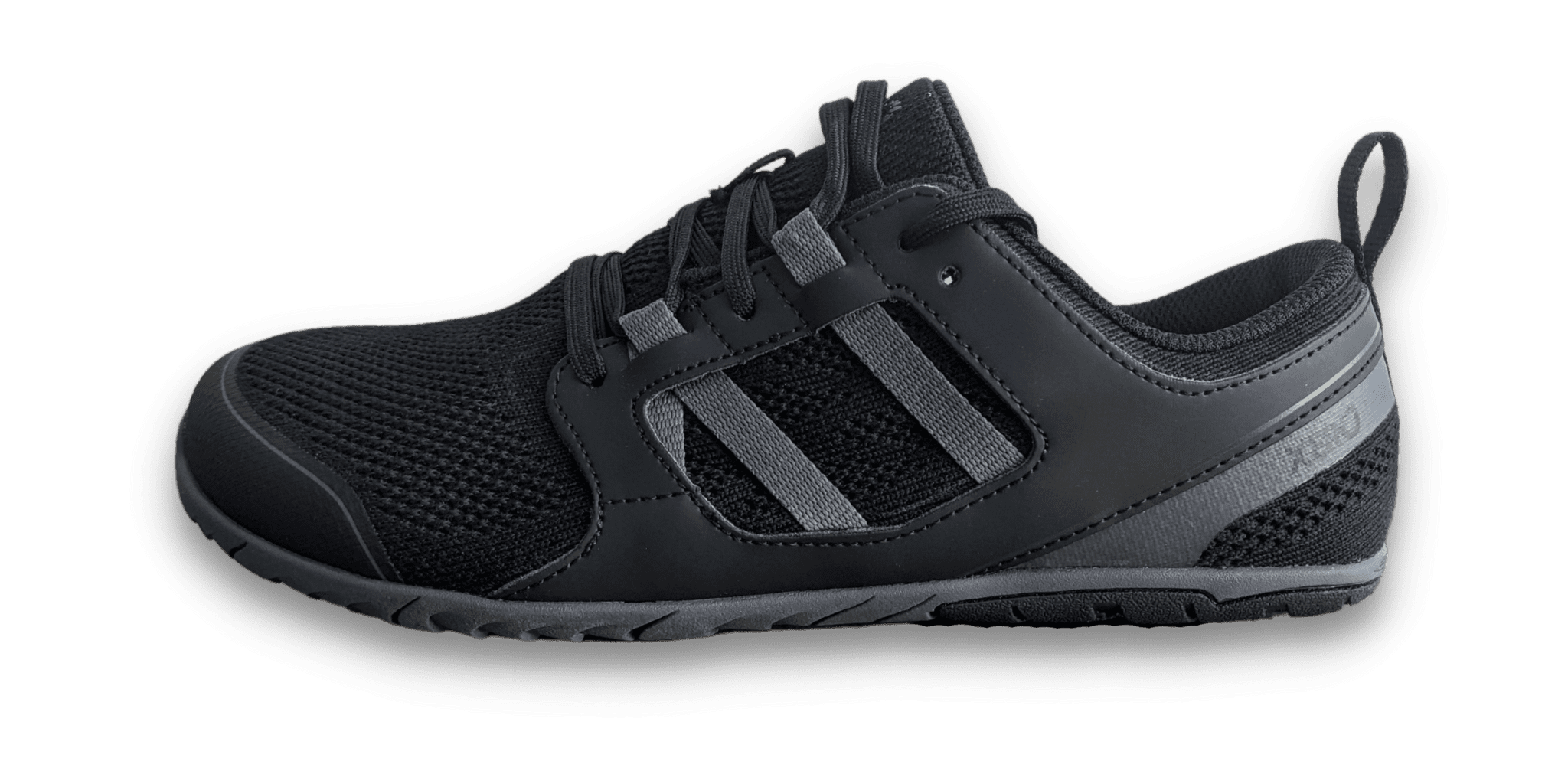
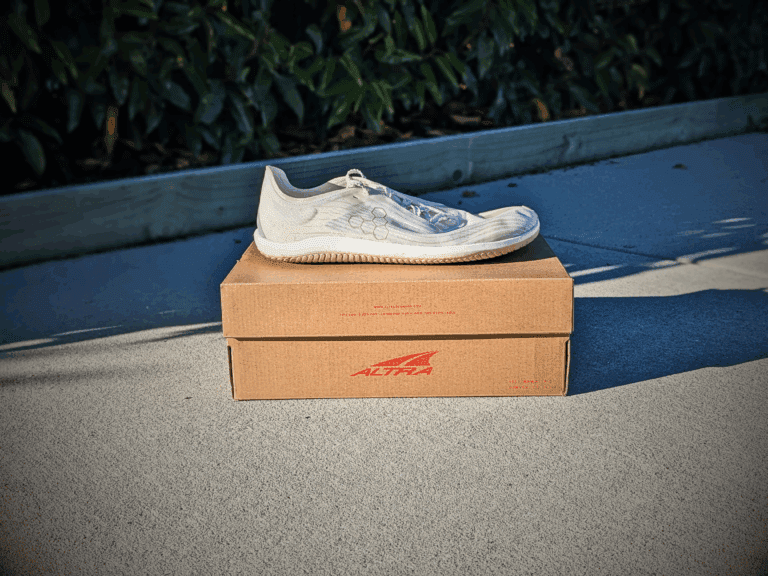


Great Review.
I bought the TerraFlex II a few months ago and found them super comfortable for my wide feet. While they’re rugged, I was disappointed with the relative lack of durability compared to my expectations (I am new to trail running). After 4.5 months of trail running between 3-6hrs a week there are holes around the toes through the outer mesh, and now holes are appearing in the inner mesh too. I had an outside strap snap on me last week, making lacing less effective. I’ve ran in rocky fire trails in Australia for part of that mileage, but I still wished they were a bit more durable especially for that price point. Sole and inner sole are still doing great.
That’s a shame. It’s similar to what I started to experience.
Do you know how many miles you had on the shoe when the strap snapped?
I think I’m going to make an edit to the post to highlight these issues.
I know it’s not really what you want to hear, but I’d 100% suggest trying the Mesa Trail II.
It’s a much better build with welded overlays in the weaker areas. The ground feel is much better, but it still offers enough protection. It’s my favorite trail shoe right now.
I have a review here – https://barefootrunreview.com/xero-shoes-mesa-trail-ii-review/
Hey Nick, great review! I’m thinking buying xero shoes for ultralight hiking (speed hiking). Now I’m using the altra shoes but they wear out really quickly. I read also your Mesa Trail II review. Did you try to hike some long distances with weight on your back with those too?
Personally I went with, and would choose again, the Mesa Trails. The Terraflex II ended up breaking down too early for me, and I had to switch them out mid-trip. The Mesa Trails where awesome, comfortable, thin, potentially a little uncomfortable depending on the weight you’re carrying, as you elude to.
I used mine for fastpacking, so super light weight. 7kg (~15lb) was my max with water. And I was doing up to +50km a day.
But note, I’m saying Mesa Trail, and not Mesa Trail II!
I think the Mesa Trail II is even better! It’s a little more durable and protective, but still very minimal.
In the end, it comes down to your feet strength and conditioning. Have you been hiking with weight on your back in minimal shoes? If so, you’ll be fine, if not, you’ll have to get some training in. If you’re coming from tradition shoes/boots, the transition will take even longer.
Feel free to email me at hello@barefootrunreview.com and I’m super happy to help you work out the transition, or the next pair of shoes!
I have a pair of Xero Prios and I like them a lot, but after I got caught in the rain they took days to fully dry, and as they dried the upper shrank away from the sole in several spots. They still work well enough for running in dry weather, but I bought a pair of Saguaros to replace them for trail runs. I feel like a trail shoe should be able to handle a little moisture. Have you tried any of these through stream crossings, mud, or rain?
Yeah I’ve had the Terraflex pretty wet when doing the Colorado Trail, and the issue had was that it stayed wet! There’s a lot of material and it’s hard to get them dry on the trail. Although I didn’t experience any shrinkage like you mention (More likely due to being in the sun or heating them?). I would advise the Mesa Trail II instead. Much less upper material, and an all round better shoe. Order the same size as your Prio’s and I think you’ll love them.